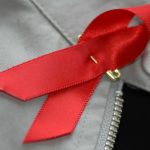 The HIV prevention landscape has changed dramatically over the last few years. In the past, most health care professionals could only support consistent use of condoms, frequent testing, and risk-reduction counseling for HIV prevention. Today, these approaches can be used in conjunction with new methods that have been developed and are now available to the public to lower risk of HIV infection.
The HIV prevention landscape has changed dramatically over the last few years. In the past, most health care professionals could only support consistent use of condoms, frequent testing, and risk-reduction counseling for HIV prevention. Today, these approaches can be used in conjunction with new methods that have been developed and are now available to the public to lower risk of HIV infection.
HIV Prevention in 2014
The two most talked-about developments in HIV prevention in the past few years both involve taking drugs that originally were designed to treat HIV, most notably the anti-retroviral medications Truvada and Isentress.
Post-Exposure Prophylaxis (PEP)
The first method is post-exposure prophylaxis, or PEP. With PEP, people can take Truvada along with Isentress for a 28-day course, as long as it is begun within 72 hours following an event or exposure that puts them at high risk for HIV infection, such as having unprotected sex or getting stuck with a needle that was used to draw blood. When taking PEP after the exposure, the medications prevent HIV from replicating, or making copies of itself, and spreading through the body. Most emergency rooms, urgent care clinics, and HIV clinics have policies in place to administer PEP to patients.
Pre-Exposure Prophylaxis (PrEP)
The second method, PrEP (pre-exposure prophylaxis), can be prescribed to someone who might continually be putting himself or herself at risk for HIV infection. Using PrEP is similar to taking malarial prophylaxis or birth control pills, in that the individual takes PrEP continuously for as long as he or she is at risk of HIV infection. The steady build-up of medication in the body decreases, but does not eliminate, the risk of becoming infected with HIV.
Beware of Limitations
PEP and PrEP are not 100-percent effective and do not guarantee that someone will not become infected. As with any medication, you should always discuss the risks and benefits with your provider and follow the policies in place to secure the right amount of doses and ensure that adequate HIV testing is performed along the way. PEP and PrEP do not protect against other sexually transmitted diseases or against pregnancy.
PEP and PrEP Augment the HIV Prevention Toolbox
PEP and PrEP are two developments that have given consumers additional options for preventing HIV infection. For the health care professional, PEP and PrEP should be seen as complementary resources that can be used in combination with condoms, referrals, frequent testing, and risk-reduction counseling. As we enter the 33rd year of HIV/AIDS, it is increasingly important that we continuously strive to offer options and resources that will allow our patients to make the best choices for themselves.
